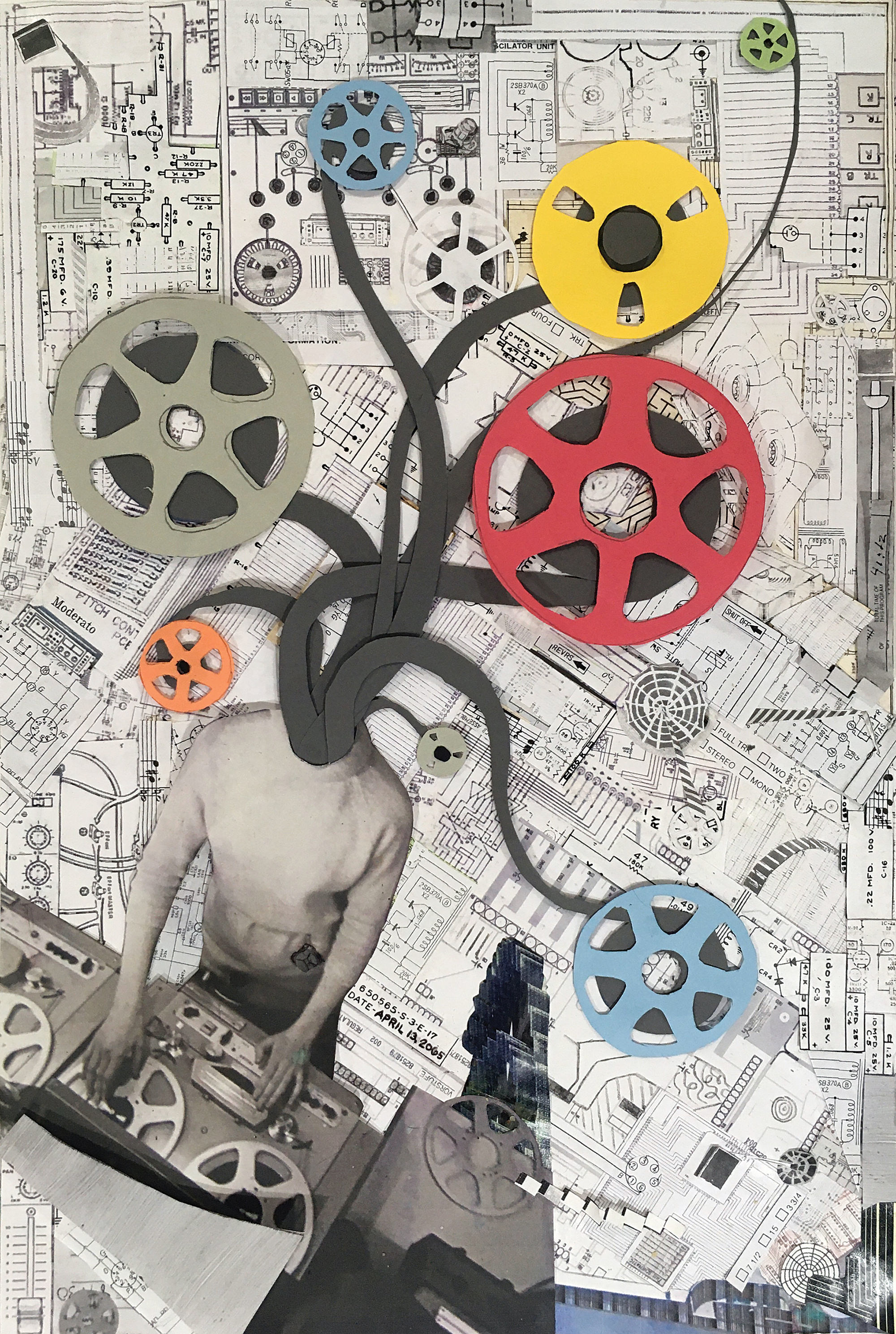The Epic 5 is a fascinating powered near-field studio monitor from reProducer Audio Labs of Laupheim, Germany. Its noteworthy appearance features an anodized aluminum front panel that is trapezoidal and slopes away from the listening position. These monitors would be right at home in the studio or on the set of a Stanley Kubrick odyssey.
The speakers arrived in a hard-shell carbon fiber trunk – not flight case-durable, but significantly more solid than a cardboard box. Custom cut foam conforms to the speakers’ unique shape while reducing the chances of transit damage. reProducer Audio Labs seems to recognize that many engineers prefer to carry their monitors from studio to studio.
It’s hard to believe the specs claiming the lowest frequency for the Epic 5s is 45 Hz, as the face features a 5.25-inch driver. However, when I installed the metal isolation spikes, I was surprised to find a down-firing 6-inch passive radiator on the bottom. For those concerned by the damage the tips could do, the Epic 5s arrive with a complement of silicon pads that cover the points.
The rear panel includes heatsink fins, controls to adjust level, plus HF- and LF-Trim adjustments. Earning bonus points are jacks for balanced XLR and unbalanced RCA inputs, plus an Input Selector toggle to flip back and forth. I appreciated the foresight to include both input formats since I never know if I’ll need to hook up a laptop, tablet, or another unbalanced device.
The manufacturer suggests an equilateral triangle setup ranging from two and a half to four and a half feet per side. However, a key consideration, is that these monitors are designed to sit as-is on a meter bridge or stand. My first instinct was to install them at a lower-than-usual height, allowing the up-pointing speakers to reach my ears from that angle. I’m guessing most people will impulsively place them at the standard level but prop up the rear of the cabinets to point the drivers directly towards the listener. Both of these assumptions are wrong. The Epic 5 speakers angle away from the engineer to time-align the drivers without resorting to DSP. There are some creative design choices at play, but the Epic 5’s signal path is fully analog.
So how do they sound? Well, pretty damn good. They put out enough bass to push them beyond that typical, “really nice for a small-sized monitor,” which is reviewer-speak equivalent to declaring “they’re the tallest player on the kindergarten basketball team.” When I placed them too close to the wall, I found the EQ adjustments to be required. If your room permits, giving them more space enables the cabinets to “breathe,” bringing out the best from the Epic 5s, especially with regard to bass accuracy. The 1-inch tweeter, which appears to be larger than most, produces decent top end without any confusing hype.
In my estimation, the strength of the speakers is in the midrange. The review units presented a good bit of detail in the mids, especially on vocals. I also found it easy to determine how well center-panned elements relate to one another. For example, finding the right balance of guitar versus singer was easy to achieve. Likewise, I thought it was faster to obtain a mix that translates well on today’s playback devices (laptops, phones, or earbuds). For engineers working in hip-hop, rap, electronica, or any genre responsible for the marriage of heavy bass and clear vocals, the Epic 5s could be the near-field you’ve been waiting for.
I know many readers rely on the white-coned bookshelf speakers. I get it; their waterfall decay ranks among the best available. Heck, I own a pair myself. Granted, they were the best option in an era of few choices, but that doesn’t make them worthy of perpetual acceptance. We used to use moving-coil mics because that’s what we had. Imagine ignoring the new STC/Coles 4038 because other engineers were using the Blumlein HB1 – it makes no sense. We have better choices with broader frequency response, and more accurate near-field options. Companies like reProducer Audio Labs are offering well-conceived products tailored to today’s production needs (and 2021 studio spaces). I enjoy these monitors, and if you need more power they have a mid-field model that recently hit the market. Don’t worry; they’re as equally wild to look at.




_disp_horizontal_bw.jpg)